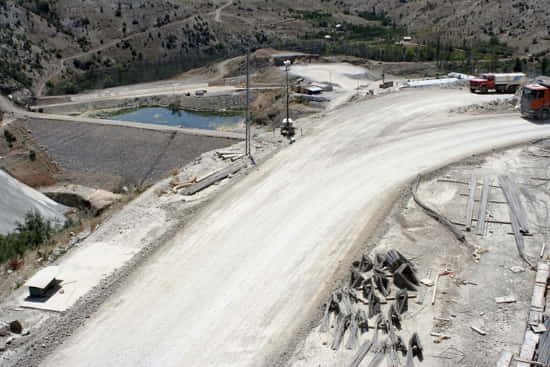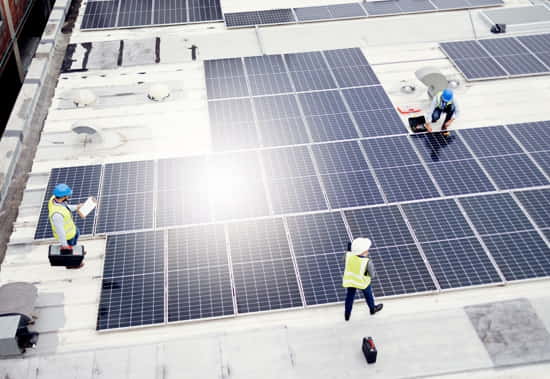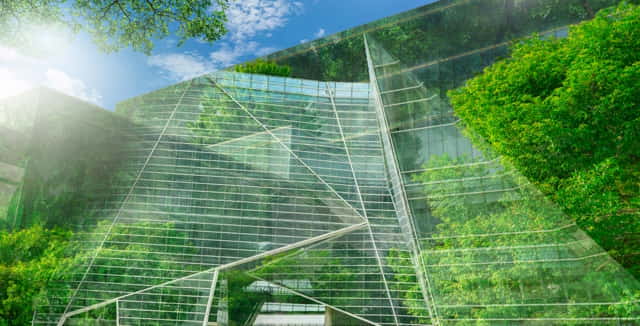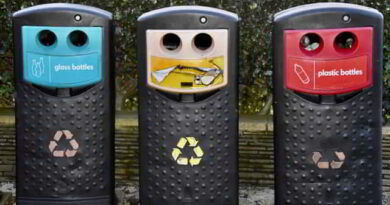Sustainability and Construction: Building a Better Future
Introduction
As our society becomes more conscious of the impact we have on the environment, sustainability has become a critical issue in all industries. The construction industry is no exception. Buildings account for a significant portion of our energy consumption and greenhouse gas emissions. Therefore, it’s essential to consider sustainability in construction to reduce our carbon footprint and promote a more sustainable future. In this article, we will explore the concept of sustainability in construction, its benefits, and the strategies that can be implemented to promote sustainable building practices.
Understanding Sustainability in Construction
Sustainability in construction refers to building design, construction, and operation that prioritize environmental responsibility, social equity, and economic viability. It involves considering the impact of construction activities on the environment and society while ensuring that the building meets its intended purpose. Sustainability in construction practices aim to minimize waste, reduce energy consumption, and limit the use of non-renewable resources while enhancing the quality of life for occupants.
The Benefits of Sustainable Construction
Sustainable construction practices have numerous benefits, including:
Environmental Benefits
- Reduced greenhouse gas emissions
- Efficient use of energy and resources
- Conservation of natural resources
- Improved air and water quality
Social Benefits
- Improved health and well-being of occupants
- Enhanced community resilience
- Creation of green jobs
- Increased social equity
Economic Benefits
- Reduced operating costs
- Increased asset value
- Improved long-term financial performance
- Reduced liability risks
Strategies for Sustainable Construction
To achieve sustainability in construction, several strategies can be implemented. These strategies include:
Site Selection and Planning: Tips for Choosing the Perfect Location
When starting a new business, one of the most important decisions you’ll make is selecting the right location. Site selection and planning can make or break your business, so it’s crucial to get it right. Here are some tips to help you choose the perfect location for your business.

Conduct a Site Analysis
Before choosing a site, it’s important to conduct a site analysis. This involves evaluating the physical, economic, and regulatory factors that could impact your business. Look for sites that are easily accessible, have adequate parking, and are in a visible and convenient location. Consider the local labor market, competition, and zoning regulations.
Consider the Demographics of the Area
Understanding the demographics of the area can help you choose a location that will appeal to your target market. Look for areas with a high population density, a strong economy, and a good quality of life. Consider factors such as age, income, education, and lifestyle.
Evaluate the Competition
Before choosing a location, evaluate the competition in the area. Look for areas with a high demand for your product or service but with low competition. Consider the pricing strategies, marketing techniques, and customer service of your competitors.
Research Incentives and Assistance Programs
Many states and localities offer incentives and assistance programs to attract new businesses to the area. Research these programs and see if they can help offset the costs of starting your business. Look for tax incentives, grants, and low-interest loans.
Choose a Site that Meets Your Future Needs
When choosing a site, it’s important to think about your future needs. Look for a site that can accommodate your growth and expansion plans. Consider the availability of utilities, transportation infrastructure, and the potential for future development.
Materials Selection: How to Choose the Right Materials for Your Project
Choosing the right materials is crucial for the success of any project, whether it’s a building, a product, or a piece of equipment. The materials you choose will impact the performance, durability, and cost of your project. Here are some tips to help you choose the right materials for your project.

Consider the Purpose and Requirements of Your Project
Before selecting materials, it’s important to consider the purpose and requirements of your project. Think about the intended use, the environment, and any safety or regulatory requirements. This will help you narrow down your options and choose materials that meet the specific needs of your project.
Evaluate the Properties of Different Materials
Each material has its own unique properties that affect its performance and suitability for different applications. Consider properties such as strength, durability, corrosion resistance, and thermal conductivity. Evaluate how each material performs under different conditions and how it compares to other materials.
Consider the Cost and Availability of Materials
Cost and availability are important factors to consider when selecting materials. Look for materials that are cost-effective and readily available. Consider the long-term costs of using a particular material, including maintenance, repair, and replacement costs.
Research the Environmental Impact of Materials
Sustainability is becoming increasingly important in material selection. Research the environmental impact of different materials, including their carbon footprint, recyclability, and disposal requirements. Look for materials that are environmentally friendly and align with your sustainability goals.
Consult with Experts and Suppliers
Choosing the right materials can be a complex process. Consult with experts, such as engineers and architects, to get advice on materials selection. Also, talk to suppliers to get information on material availability, pricing, and performance.
Energy Efficiency: How to Save Energy and Money
Energy efficiency is the key to reducing your energy bills and minimizing your carbon footprint. By making simple changes to the way you use energy, you can save money and help protect the environment. Here are some tips to help you improve your energy efficiency.

Upgrade to Energy-Efficient Appliances
Older appliances consume more energy than newer, more efficient models. Consider upgrading to Energy Star certified appliances that are designed to use less energy while still providing the same level of performance. You can also reduce energy consumption by using appliances during off-peak hours and unplugging them when they’re not in use.
Use LED Light Bulbs
LED light bulbs are more energy efficient than traditional incandescent bulbs. They use up to 80% less energy and last up to 25 times longer. By replacing your traditional light bulbs with LED bulbs, you can significantly reduce your energy consumption and save money on your energy bills.
Install Programmable Thermostats
Programmable thermostats allow you to set the temperature of your home based on your schedule. You can program the thermostat to lower the temperature when you’re away from home or asleep, which can help you save money and energy. You can also set the thermostat to turn on the air conditioning or heating before you arrive home, so you don’t waste energy heating or cooling an empty house.
Seal Air Leaks
Air leaks around doors, windows, and other areas of your home can waste energy and money. Sealing these leaks with weatherstripping or caulking can help reduce energy consumption and keep your home comfortable year-round. You can also install energy-efficient windows and doors that are designed to prevent air leaks and reduce energy consumption.
Use Energy-Efficient Heating and Cooling Systems
Heating and cooling systems are one of the biggest consumers of energy in a home. Upgrading to energy-efficient systems, such as heat pumps or geothermal systems, can significantly reduce energy consumption and save money on energy bills. Regular maintenance, such as cleaning or replacing air filters, can also improve the efficiency of your heating and cooling systems.
Water Conservation: A Comprehensive Guide to Saving Water
Water is a precious resource that we cannot afford to waste. Unfortunately, water scarcity is becoming an increasingly common problem in many parts of the world, making it essential to conserve water wherever possible. In this article, we’ll explore some simple yet effective ways to conserve water in our daily lives.

The Importance of Water Conservation
Water conservation is essential for several reasons. First and foremost, it helps to preserve this valuable resource for future generations. It also reduces the strain on water supplies and helps to ensure that everyone has access to clean and safe water.
Moreover, water conservation can also lead to significant cost savings. By using water more efficiently, households and businesses can reduce their water bills and save money in the long run.
Tips for Conserving Water
Here are some tips to help you conserve water in your daily life:
1. Fix Leaks
Leaky faucets and pipes can waste a significant amount of water over time. Therefore, it’s essential to fix any leaks as soon as they are detected.
2. Use Water-Efficient Appliances
Upgrading to water-efficient appliances such as washing machines, dishwashers, and toilets can significantly reduce water usage. Look for appliances with the WaterSense label, which indicates that they meet specific water efficiency standards.
3. Install Low-Flow Fixtures
Low-flow fixtures such as showerheads and faucets use less water than traditional fixtures. Installing these fixtures can help to reduce water usage without sacrificing performance.
4. Take Shorter Showers
Showers can use a significant amount of water, especially if they are long and frequent. Taking shorter showers can help to reduce water usage and save money on water bills.
5. Use a Bucket to Collect Water
Instead of letting water run down the drain while waiting for the shower or sink to warm up, use a bucket to collect the water. You can then use this water to water plants or flush the toilet.
6. Water Your Lawn and Garden Wisely
Watering your lawn and garden early in the morning or late in the evening can help to reduce water loss due to evaporation. Additionally, using a drip irrigation system or a soaker hose can help to deliver water directly to the roots of plants, reducing water waste.
7. Harvest Rainwater
Collecting rainwater can be a great way to reduce water usage and save money on water bills. You can use rainwater to water your plants, wash your car, or even flush your toilet.
Waste Management: A Guide to Reducing Waste and Protecting the Environment
Waste management is a crucial aspect of environmental sustainability. With the increasing amount of waste generated each year, it’s important to adopt responsible waste management practices to minimize the negative impact on our planet. In this article, we’ll explore some simple yet effective ways to manage waste and protect the environment.

The Importance of Waste Management
Waste management is crucial for several reasons. First and foremost, it helps to reduce the negative impact of waste on the environment. Proper waste management can also lead to significant cost savings by reducing the amount of waste that needs to be disposed of and avoiding fines for improper disposal.
Moreover, responsible waste management practices can also help to conserve natural resources by reducing the need for raw materials and energy. This, in turn, can help to reduce greenhouse gas emissions and mitigate the negative impact of human activity on the environment.
Tips for Managing Waste
Here are some tips to help you manage waste in a responsible and environmentally friendly manner:
1. Reduce, Reuse, and Recycle
Reducing, reusing, and recycling are the three R’s of waste management. By reducing the amount of waste we generate, reusing items whenever possible, and recycling materials that can be recycled, we can significantly reduce the negative impact of waste on the environment.
2. Avoid Single-Use Products
Single-use products such as plastic bags, disposable utensils, and water bottles can generate a significant amount of waste. To reduce waste, consider using reusable alternatives such as cloth bags, metal utensils, and refillable water bottles.
3. Compost Organic Waste
Organic waste such as food scraps and yard waste can be composted to produce nutrient-rich soil. Composting not only reduces the amount of waste that needs to be disposed of but also provides a sustainable source of fertilizer for your garden.
4. Properly Dispose of Hazardous Waste
Hazardous waste such as batteries, electronics, and chemicals should be disposed of properly to avoid contaminating the environment. Contact your local waste management authority to find out how to dispose of hazardous waste safely.
5. Buy Recycled Products
Buying products made from recycled materials helps to reduce the demand for raw materials and energy, which in turn reduces greenhouse gas emissions and conserves natural resources.
6. Use Energy-Efficient Appliances
Using energy-efficient appliances can help to reduce the amount of waste generated by reducing the need for raw materials and energy. Look for appliances with the ENERGY STAR label, which indicates that they meet specific energy efficiency standards.
Conclusion
Sustainability in construction is critical in building a better future for our society and the planet. By prioritizing environmental responsibility, social equity, and economic viability, we can create buildings that are efficient, resilient, and healthy for occupants while reducing our carbon footprint. Strategies such as site selection and planning, materials selection, energy efficiency, water conservation, and waste management can all contribute to sustainable construction practices.




